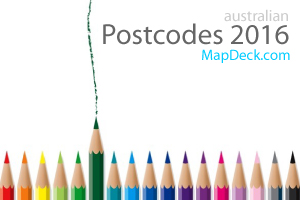 A new portal has been launched last week to provide rich information resource about Australian plants and animals. It is a "public face" of a $64.7 million initiative, funded over 6 years by the Australian Government and a group of fourteen contributors comprising scientific organisations, universities and museums. It aims to enable any user to quickly locate and access information across the Internet on all aspects of Australian biodiversity. And of course, as the name implies, the portal comes equipped with a mapping application – what better way to provide easy access to such an extensive and geographically diverse range of information!
A new portal has been launched last week to provide rich information resource about Australian plants and animals. It is a "public face" of a $64.7 million initiative, funded over 6 years by the Australian Government and a group of fourteen contributors comprising scientific organisations, universities and museums. It aims to enable any user to quickly locate and access information across the Internet on all aspects of Australian biodiversity. And of course, as the name implies, the portal comes equipped with a mapping application – what better way to provide easy access to such an extensive and geographically diverse range of information!The mapping application supporting Atlas of Living Australia is built with OpenLayers implementation of Google Map and has quite a few interesting features. In particular, I like the concept of local, regional and species "perspective" to access the information via a map driven interface. Local "your area" view gives a quick snapshot of all the species in visitor’s current location (but Google’s "IP address to location" web service is sometimes not very precise in determining user’s true location). Regions view starts with a long list of areas to choose which is a bit unfortunate but once you make your selection you have a choice to download a large selection of data in csv format.
Species Map is where the real fun starts. You can search for species using common names as well as scientific terminology – lookup feature is enabled so it shows suggestions as you type in the text. Occurrences are then mapped as points or as numbered cluster markers. Click on the map returns a query on how many occurrences of particular species are in 10km radius from a selected point.

I like how selected data layers are managed – they are added to the “current list” at the top of the navigation panel and then can be individually edited (colours, transparency, size of markers). Users can change order of layers with drag-and-drop feature.
The application comes with a long list of contextual layers – too many to mention! All well referenced to metadata and with auto generated legends for easy identification of what various colour scales mean. Created maps can be saved as images for further reuse. And for those in the know, there is an analytical module as well but I will not even try to describe what it can do – as most of such tools, it is designed for a specific purpose, not for average user.
Atlas of Living Australia is a good example of a very powerful online mapping and analysis application created with free OpenLayers implementation of Google Map and integrated with free GeoServer at the back end to manage access to the data for downloads and as WMS and WFS web services to display information dynamically on the map. It did crash on me a couple of times and some image tiles were not displaying but that are just teething problems of a newly deployed application. If something goes wrong you can always start again with a click on reset button. Very convenient feature! Access to all the data via web services is planned in the near future when the application is more stable.



No comments:
Post a Comment